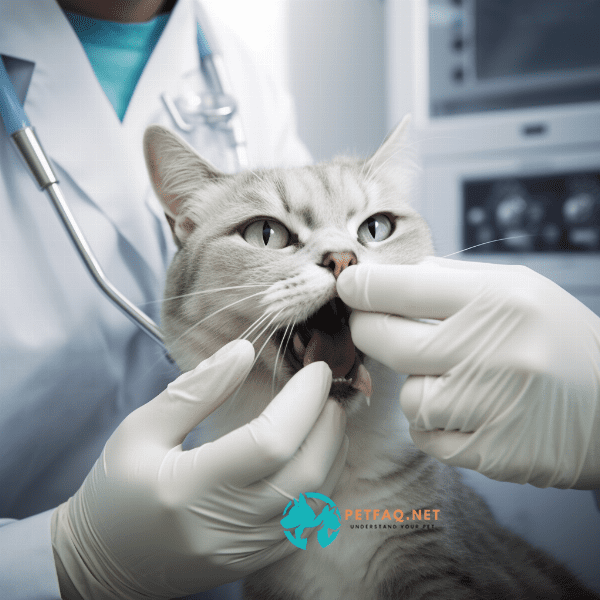Periodontal disease is a common and often overlooked health problem in cats. It is estimated that up to 70% of cats over the age of three have some degree of periodontal disease. This disease is caused by the accumulation of plaque and bacteria on the teeth and gums, which can lead to inflammation, pain, and tooth loss. Therefore, it is essential to diagnose and treat periodontal disease in cats promptly.
Diagnosing periodontal disease in cats involves a thorough dental examination. A veterinarian trained in dentistry will perform this exam. The exam typically involves a physical examination of the cat’s mouth, including the gums, teeth, and tongue. The veterinarian will look for signs of inflammation, redness, bleeding, and other abnormalities that may indicate periodontal disease.
In addition to the physical exam, diagnostic imaging may be necessary to assess the extent of the disease. Radiographs, or x-rays, can provide a detailed view of the teeth and gums, allowing the veterinarian to see if there is any bone loss or other changes to the teeth and surrounding tissues.
Another diagnostic tool that may be used is periodontal probing. This involves using a specialized instrument to measure the depth of the pockets between the teeth and gums. Deeper pockets indicate a more severe degree of periodontal disease.
Once a diagnosis of periodontal disease has been made, the veterinarian will work with the owner to develop a treatment plan. Treatment typically involves a thorough dental cleaning, which may require anesthesia, to remove the plaque and tartar buildup on the teeth and below the gum line. Antibiotics may also be prescribed to control any bacterial infection.
In addition to the initial treatment, ongoing dental care is essential for managing periodontal disease in cats. This may include regular dental cleanings, at-home dental care such as brushing, and a diet that supports dental health.
In conclusion, diagnosing periodontal disease in cats involves a comprehensive dental exam that may include physical examination, diagnostic imaging, and periodontal probing. Treatment typically involves a thorough dental cleaning and ongoing dental care. It is crucial to diagnose and treat periodontal disease promptly to prevent pain, tooth loss, and other complications associated with this common disease in cats.
Read more:Preventing Periodontal Disease in Cats

